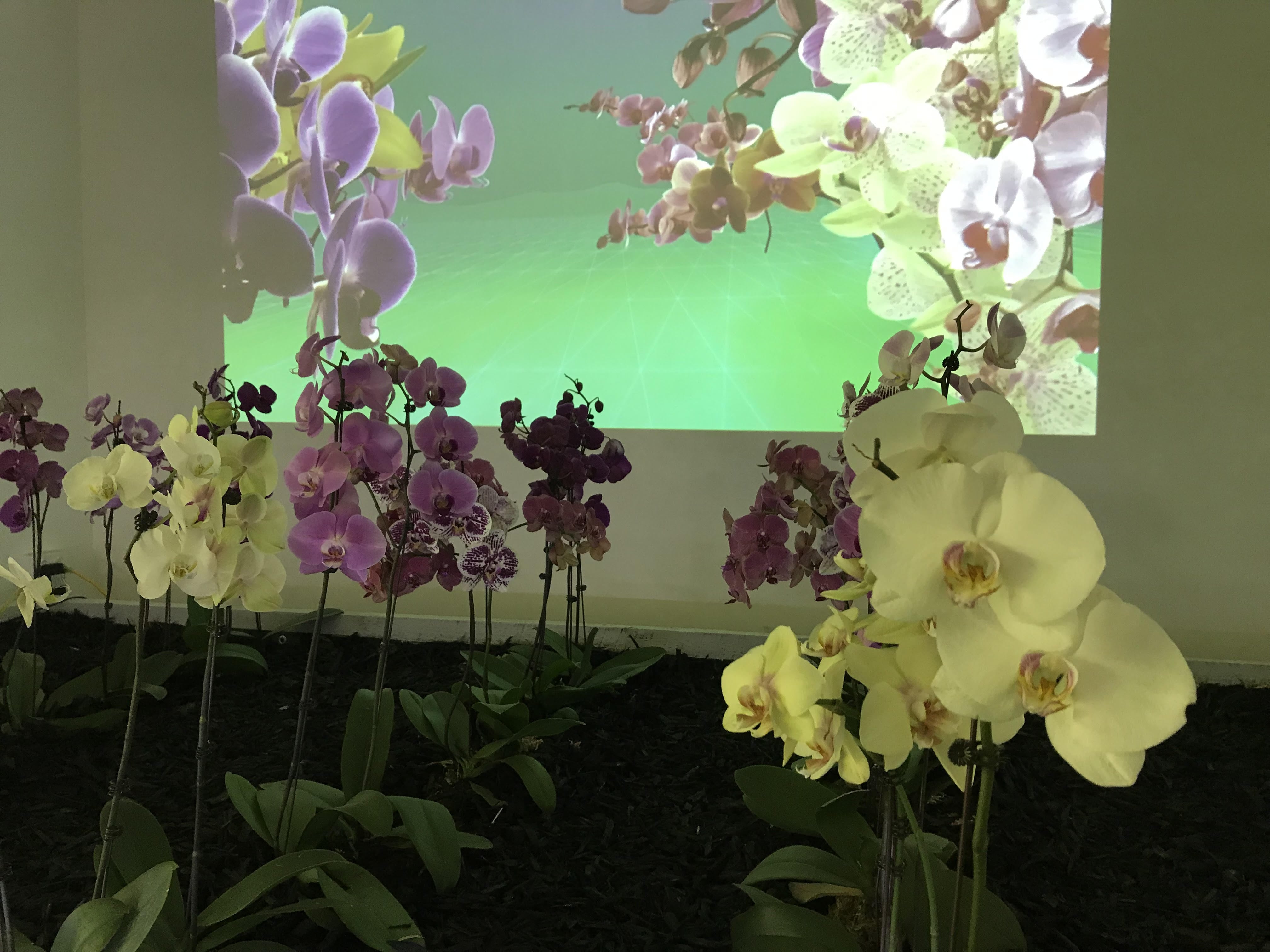
.jpg)
An orchid edges its leaves up through the layers of peat moss, bark, nutrient rich soil, to take its first breaths in the fragrant air of the farm. Or, an orchid raises its first leaves up through the display screen, pushing through streams of data into pungent technicolour downloads.
At AIRspace Projects, an orchid breathes out fresh air into the gallery space.
Sophie Penkethman-Young’s solo exhibition Woolworths Orchid raises questions about the commodification and mass production of natural objects. It consists of a video work nestled behind a garden bed containing three neat rows of orchids. A deep artificial ASMR-like voice guides us through the video, a barely distinguishable dialogue on these ‘exceptionally gorgeous’ orchids speaking over a backdrop of stomping, thumping boots growing louder and louder. Taking found-footage from the internet, Penkethman-Young shows us the life of an orchid in a factory, as its leaves are dusted, sent down conveyor belts, placed in plastic pots, or as its flowers are unceremoniously cut off. The digitised voice calls the orchid a ‘strikingly life-like flowering plant’ and yet the images flowing along conveyor belts look blazingly artificial. A Google search brings up definitions of the orchid as ‘the most highly coveted of ornamental plants’. In Ancient Greece they were associated with fertility and virility.
I consume the physical and digital orchids greedily, my eyes flicking between the production lines in the video work and the rows of orchids in the gallery space. The flowers appear delicate, sensitive, perfected; the delineation between the physical and digital gets hazy.
Are these orchids passive or are they performers in a lengthy durational work?
Rosi Braidotti writes that ‘the relationship between the human and the technological other, as well as the affects involved in it, including desire, cruelty and pain, change radically with the contemporary technologies of advanced capitalism.’1 In Natalie Jerimijenko’s Tree Logic (1999) three trees grow upside down. They defy our understanding of trees as their roots sit in the air, and their trunks face the Earth. But over time these trunks curve out to grow upwards to the sun. Jerimijenko’s trees are being asked by the artwork to display their natural state, in spite of the restrictions placed on them.
Penkethman-Young’s orchids show their natural state almost in spite of their surroundings, rising to the occasion of their scrutiny. In the gallery space, the orchid blooms firmly face the viewer, unable to turn around to see themselves in the video work with its soundscape behind. There is a mesmerising, and almost grotesque, juxtaposition to watching the orchids as both a mass-produced object and a delicate physical object.
After flowering, the orchid stalk must be cut off to allow for another to grow. Their blooming is not perpetual. Flowers rarely are. This makes it an easy target for consumer culture. And I find myself searching the Woolworths’s website, trying to buy an orchid online.
Harriet McInerney is a writer living on Gadigal land. She has published both critical and creative work including a chapbook Houseplant (SOd), the artist zine La Jocosidad, Open Invite: In Response to Laura Meza Orozco (Interlude), and was shortlisted for the 2018 TLB Experimental Non-Fiction Prize. She is interested in ecological and feminist perspectives.
